Title |
| “It’s contemporary art, stupid” – Curating computer based art out of the ghetto |
Author |
| Inke Arns, Jacob Lillemose |
Year |
| 2005 |
Publisher |
| argoseditions |
Description |
| The following text was written in collaboration and it emanates from ongoing discussions we have had in the past year since meeting at the Read_me festival in Aarhus, Denmark, last August. Our discussions have focused on what influence curating and the discourse surrounding it has on the relationship between computer based art and contemporary art in general. We both felt that the two fields were too separate and that some kind of mediation between them was needed. We do not see this text as a conclusion to our discussions but rather as an open invitation to further discussion and mediation. |
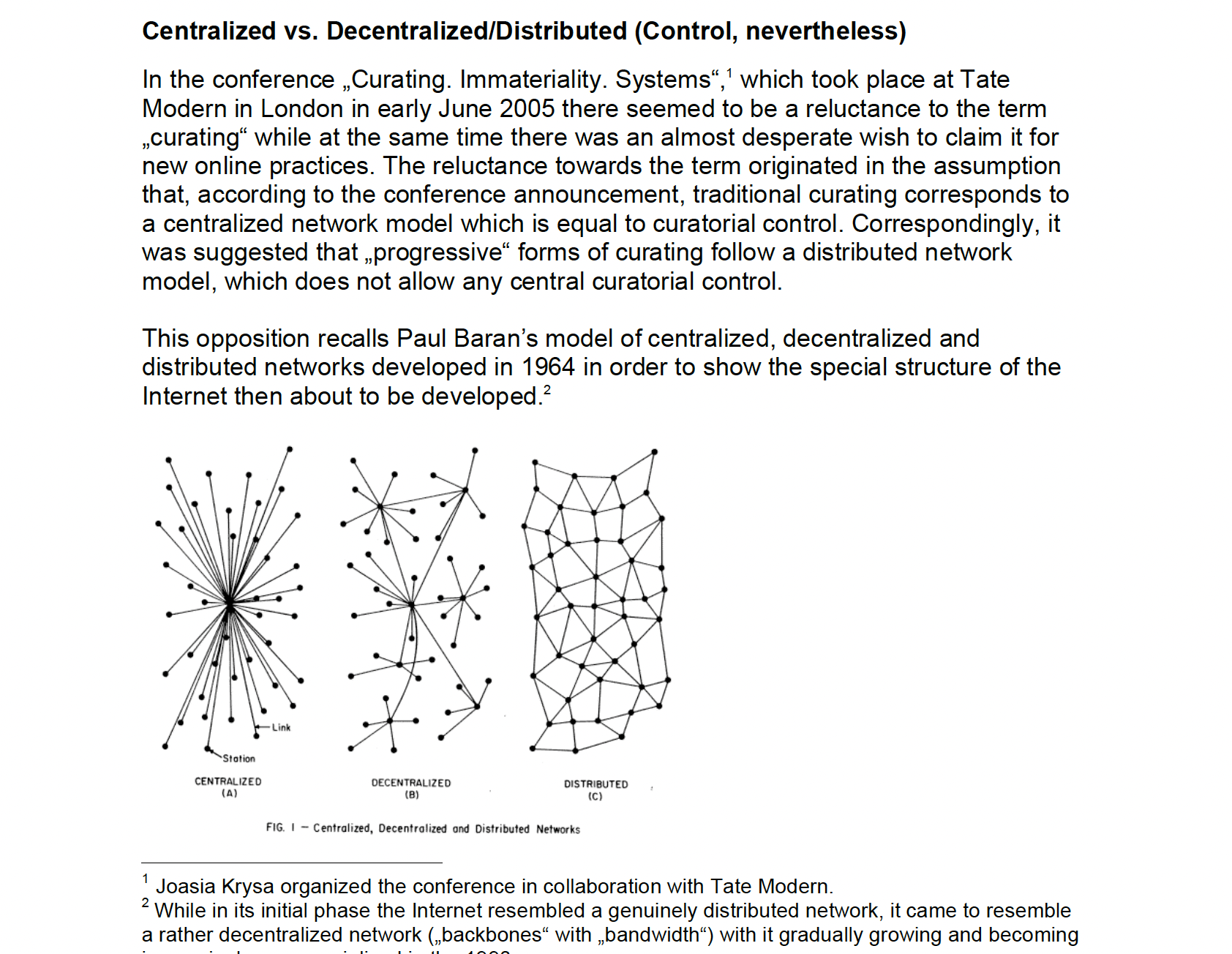 |
Title |
| An Incomplete Timeline of Online Exhibitions and Biennials |
Author |
| Oliver Laric |
Year |
| 2013 |
Publisher |
| Online |
Description |
| This concise history is an HTML page that offers a partial list of online exhibitions and biennials that took place from 1991-2013, with short text descriptions of each and several screen captures of the projects included. Oliver Laric created this work in response to an invitation to participate in BiennaleOnline 2013, an online exhibition that opened on April 26, 2013. Organizers ARTPLUS had described the project as "the first exclusively online biennial exhibition of contemporary art." Described in its title as "incomplete," Laric's timeline should not seen as an authoritative history of the online exhibition, but as an artist's response to this ahistorical assertion. In assembling this timeline, Laric spoke with a number of people, including Cory Arcangel, Claude Closky, Michael Connor, Lauren Cornell, Raffael Dörig, Martin Germann, JODI, Miltos Manetas, Eva and Franco Mattes, Domenico Quaranta and Billy Rennekamp. Every suggested project that could be defined as an online exhibition or biennial was included. |
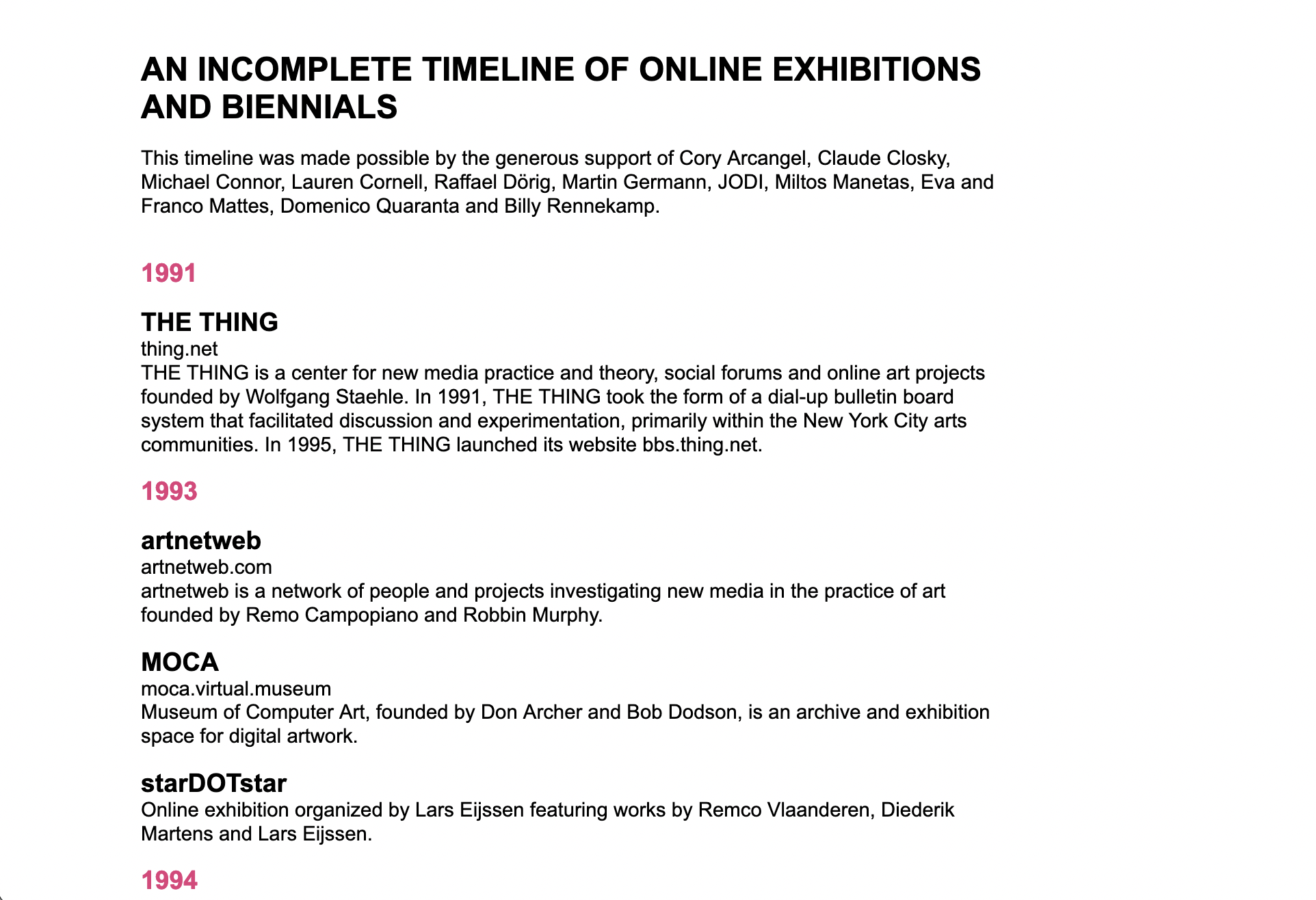 |
url |
| https://artbase.rhizome.org/wiki/Q1276 |
Title |
| Art Platforms and Cultural Production on the Internet |
Author |
| Olga Goriunova |
Year |
| 2012 |
Publisher |
| Routledge |
Description |
| In this book, Goriunova offers a critical analysis of the processes that produce digital culture. Digital cultures thrive on creativity, developing new forces of organization to overcome repetition and reach brilliance. In order to understand the processes that produce culture, the author introduces the concept of the art platform, a specific configuration of creative passions, codes, events, individuals and works that are propelled by cultural currents and maintained through digitally native means. Art platforms can occur in numerous contexts bringing about genuinely new cultural production, that, given enough force, come together to sustain an open mechanism while negotiating social, technical and political modes of power. |
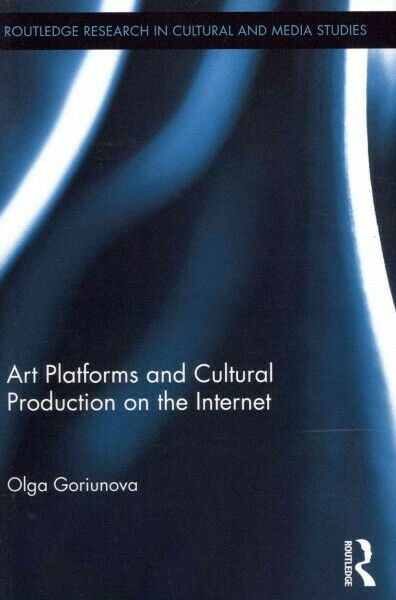 |
url |
| https://www.routledge.com/Art-Platforms-and-Cultural-Production-on-the-Internet/Goriunova/p/book/9780415717922 |
Title |
| content | form | im-material |
Author |
| cont3xt.net |
Year |
| 2011 |
Publisher |
| Verlag für moderne Kunst Nürnberg |
Description |
| Why is it still easier to get an entire museum collection on the Internet than to get a single work of Internet-based Art in a museum space? As with the nature of this question, both aspects have to be taken into account: the field of Internet-based Art with its characteristics and proponents, as well as the mechanisms that allow institutions to filter what the public at large understands to be art. The book “Content | Form | Im-material” analyses how artistic creation on—and based upon—the Internet and the processes of its re-formulation in the real space can be developed in order to find appropriate presentational modes, suitable for both sides—the Internet and the art world—in favour of interdisciplinary discourse. It also represents a synopsis of the activities of the art collective CONT3XT.NET over the past five years, since it was founded in Vienna in early 2006 by Sabine Hochrieser, Michael Kargl, Birgit Rinagl and Franz Thalmair. Programmatically, this group of artists, curators and authors—their different roles and functions sometimes regarded strictly, sometimes as a fluid continuum—work at the basis of contemporary visual, textual and networked practices. Always starting from the idea of the context as the most indecisive and variable but relevant constraint of any situation, the collective analyses the spatial, temporal, discursive as well as the institutional framework that conceptual artistic practices are rooted in today. Here the main point of interest is the exploration of creative territories shifting between the ‘virtual’ and the ‘real’ as well as between the dimensions of the ‘inside’ and the ‘outside’ of the field of art. This book can be read as a loose documentation of projects as well as a screenshot of tendencies that have emerged and disappeared within the past few years. Anyhow, it is a protocol of workflows concerned with matters of content, form and im-material. |
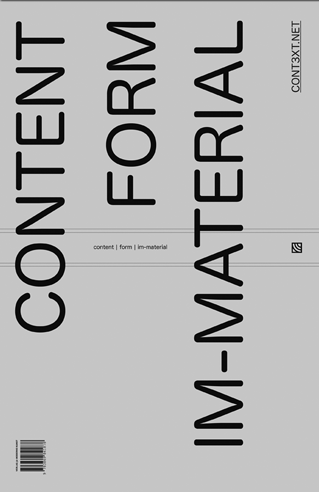 |
url |
| [:en]https://michaelkargl.com/wp-content/uploads/2019/11/content-form-im-material.pdf[:it]https://michaelkargl.com/wp-content/uploads/2019/11/co[:] |
Title |
| CRUMB: New media curating resource |
Author |
| Beryl Graham, Sarah Cook |
Year |
| 2000 |
Publisher |
| CRUMB, University of Sunderland, UK |
Description |
| Building on research into curating new media art since 1993 at the University of Sunderland, CRUMB was founded by Beryl Graham and Sarah Cook in 2000 within the School of Arts, Design, Media and Culture, with a Small Grant from the Arts and Humanities Research Board. CRUMB's activities cover a range of practices, but are predominantly based around research, networking, and professional development for curators of new media art. CRUMB members run a lively discussion list on curating new media art with over 1000 international subscribers, publish interviews with curators, and lecture and publish widely, contributing to academic books as well as artists' exhibition catalogues. |
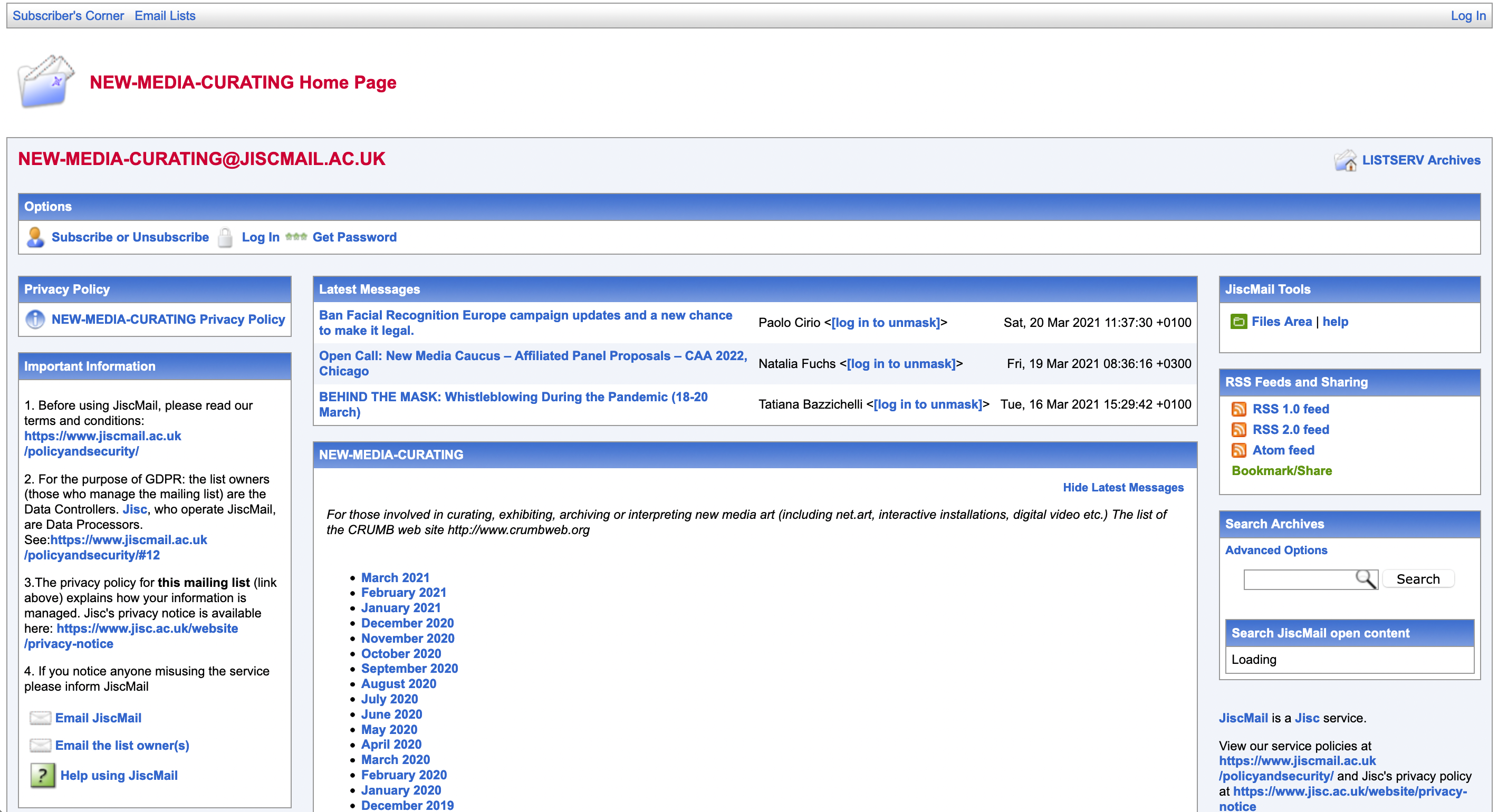 |
url |
| https://www.jiscmail.ac.uk/cgi-bin/wa-jisc.exe?A0=NEW-MEDIA-CURATING |
Title |
| Curating (on) the Web |
Author |
| Steve Dietz |
Year |
| 1998 |
Publisher |
| Museum and the Web 1998 |
Description |
| "My experience these days (as opposed to just last year) working with museums and new media is that while most personnel don't understand how the Internet works--which seems perfectly reasonable--increasingly they understand how it can work for them. Usually this is as another avenue for education and communication. In this sense, there is nothing particularly revolutionary about the Web. It's a bit like direct marketing, only funner. It's like distance learning, only via a computer instead of a camera. It's like publishing a brochure or catalog, only you can still make changes after it's "printed." The echo of McLuhan here--we tend to understand new media, initially, in terms of our understanding of old media--is familiar and entirely appropriate." |
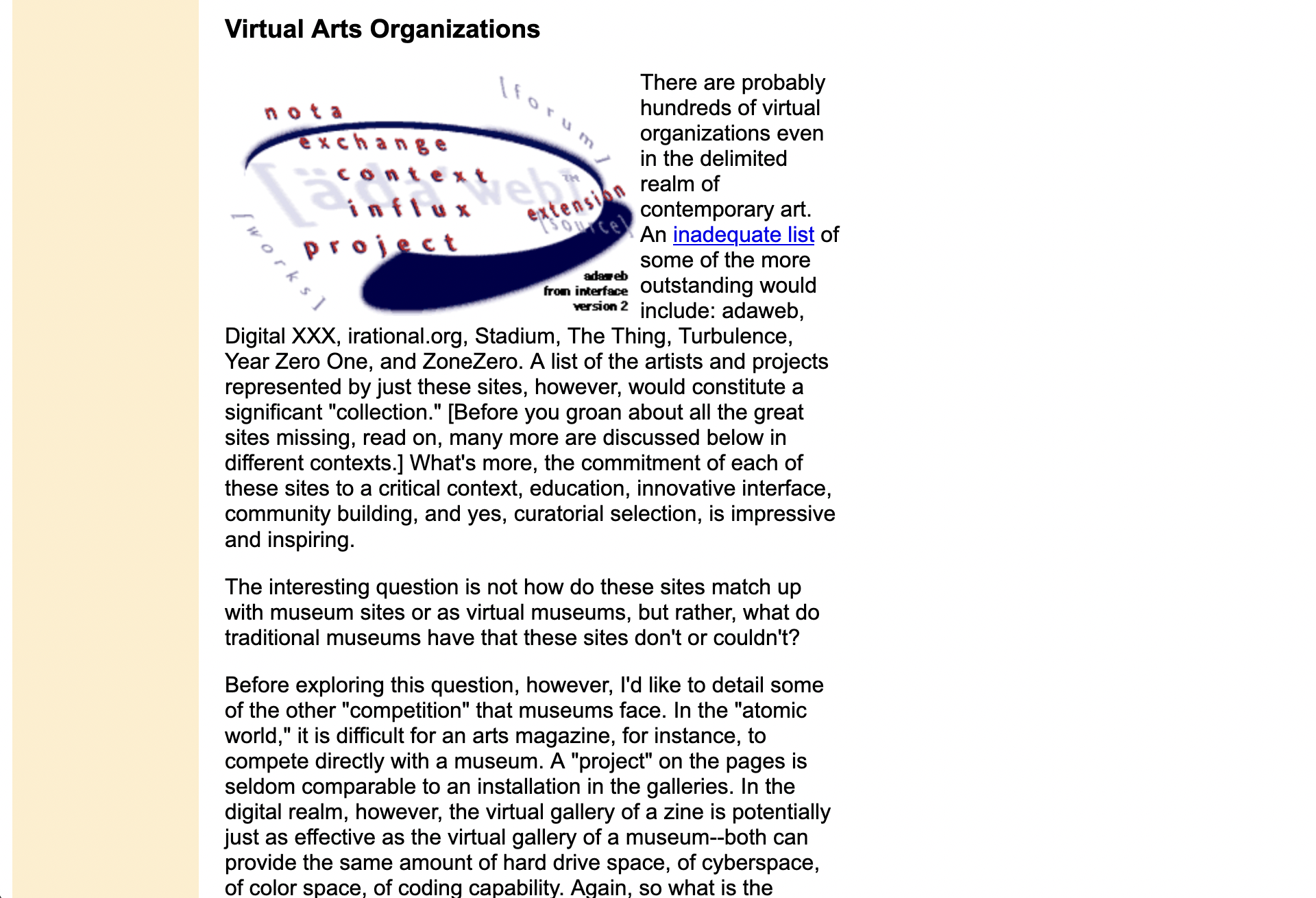 |
url |
| [:en]http://www.museumsandtheweb.com/mw98/papers/dietz/dietz_curatingtheweb.html[:it]https://www.museumsandtheweb.com/mw98/papers/dietz/dietz_curatingtheweb.html[:] |
Title |
| Curating Data: care, commons and networks |
Author |
| Annet Dekker, Asen Ivanov, Theresa Kneppers, Eva Krumm, Kelly Rappleye, Magda Tyzlik-Carver, Marina Valle Noronha Marialaura Ghidini Gaia Tedone |
Year |
| 2020 |
Publisher |
| Digital Methods Initiative Wiki, University of Amsterdam |
Description |
| It is clear that digital networks for a long time have been much more than just communication channels and today they are the very heart of public life. In the context of climate change, world-wide pandemic, increasing commercialization of network infrastructures, and diminishing funding for art and cultural practices, there is a need to establish a framework for understanding current developments in the field of digital curation. In this project, we focused on digital curation, which we regarded not as an act in the silo of the art world and its institutions but as a networked practice performed daily by social media users, programmers, and algorithms. In this sense, the meaning of curating has expanded beyond the usual space of the gallery and art institutions and is part of scientific practices of data collection, storing, and presentation. It is a practice of curating content for commerce and function in search optimization algorithms. Rather than lamenting over the fact that today ‘everyone is a curator’ or that we are in the midst of ‘curationism’, which supposedly diminishes the value of the practice, we made an in-depth analysis of digital curation to re-address the necessity for care and collaboration in these practices. |
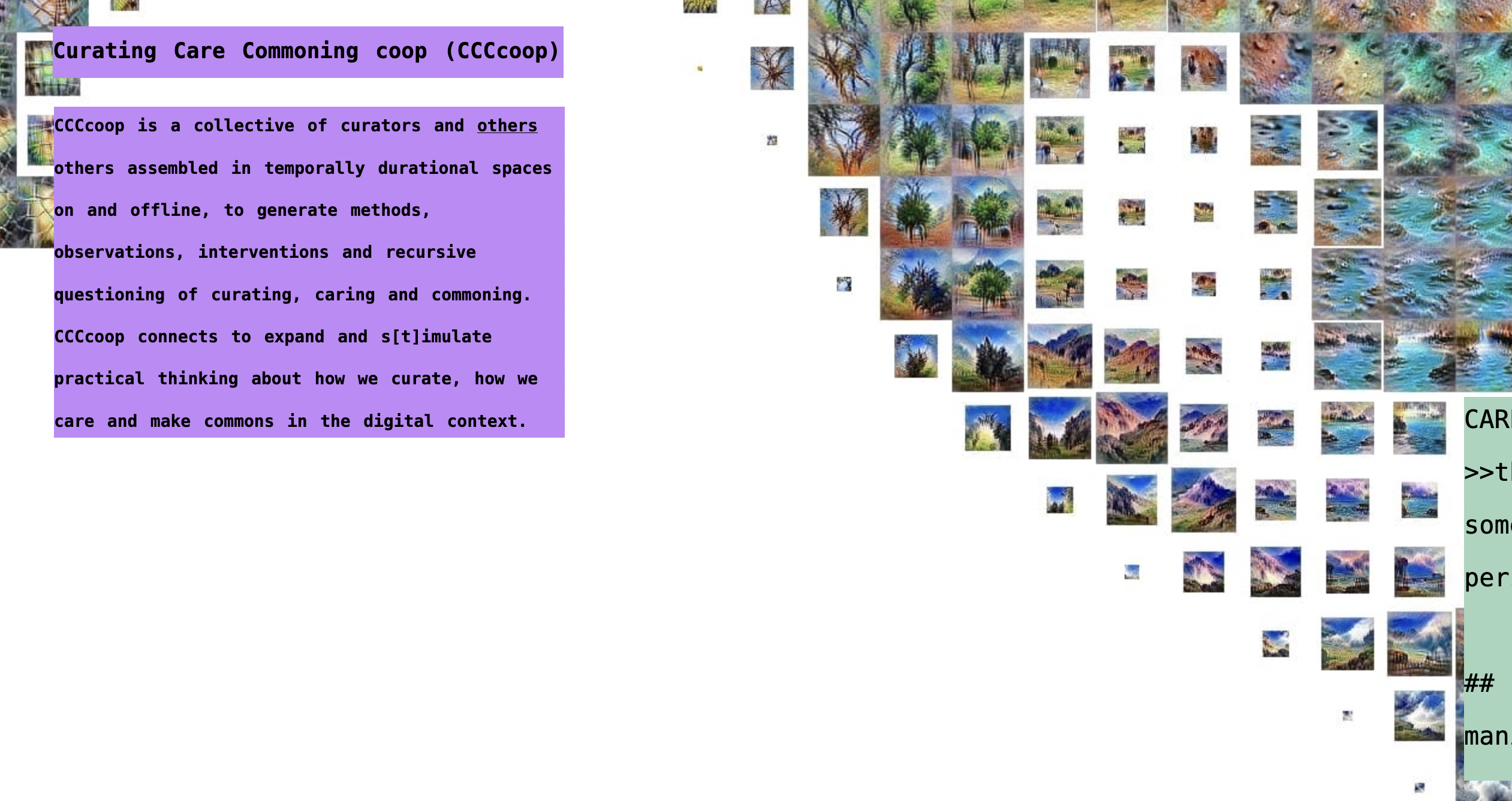 |
url |
| https://wiki.digitalmethods.net/Dmi/SummerSchool2020CuratingData |
Title |
| Curating in/as commons: posthuman curating and computational cultures |
Author |
| Magdalena Tyżlik-Carver |
Year |
| 2016 |
Publisher |
| School of Communication and Culture, Aarhus University, Denmark |
Description |
| This thesis is a material-discursive investigation of how practices of curating and commons are posthuman today. Recognising how contemporary forms of curating and commons are part of computational cultures and how they are influenced by mass participation in socio-technological networks, the thesis examines how users (including curators), machines and software stimulate new forms of curating and commons. Its main focus is on how these practices influence the field of computation by becoming active within it. |
 |
url |
| https://www.academia.edu/29844696/Curating_in_as_Common_s_Posthuman_Curating_and_Computational_Cultures |
Title |
| Curating Media/Net/Art: Circulating Contexts |
Author |
| CONT3XT.NET (Sabine Hochrieser, Michael Kargl, Franz Thalmair) cont3xt.net |
Year |
| 2007 |
Publisher |
| CONT3XT.NET |
Description |
| Curating Internet-based Art in a media of its own developed into a multifaceted communication process on content among users of all backgrounds and provenances. Net curators are deemed cultural context providers, meta artists, power users, filter feeders or simply proactive consumers. Curating (on) the Web, as termed in 1998 already, not only creates a public space for Net Art protagonists, but also enables them to participate in creating their own public space, which often takes on the form of discursive models. Handling technological developments and knowledge about existing channels of communication are integral parts of net curating, as are providing resources, initiating collaborations and remaining in contact with international networks. |
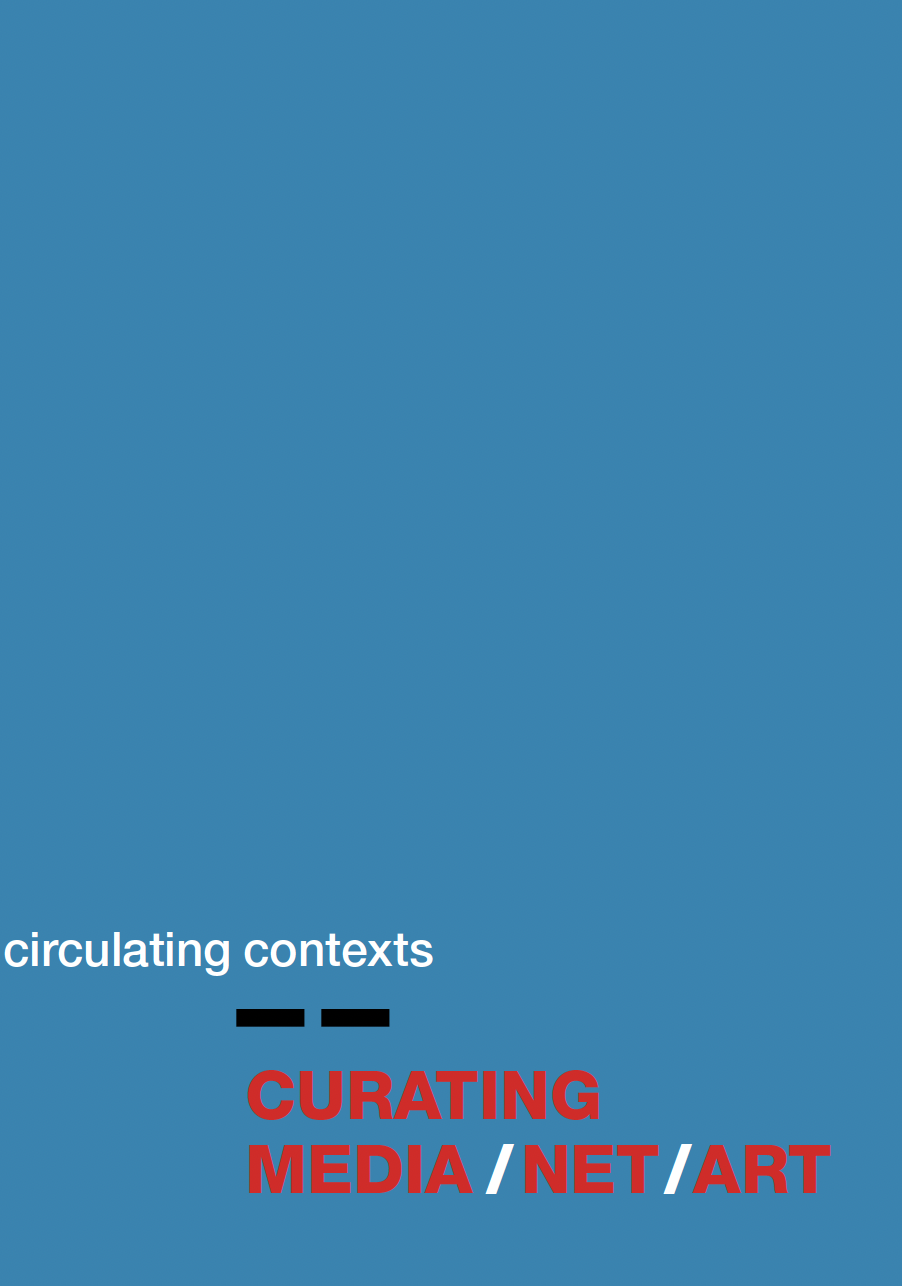 |
Title |
| Curating on the Web: The Evolution of Platforms as Spaces for Producing and Disseminating Web-Based Art |
Author |
| Marialaura Ghidini |
Year |
| 2019 |
Publisher |
| Arts Journal |
Description |
| By analysing a series of exhibition projects responding to central changes in web technology since its public unveiling (1991), this study identifies a historical trajectory for discussing the evolution of curating on the web. Such evolution highlights how curators have devised exhibition models that operate as platforms for not only displaying art specific to the web, but also for producing and disseminating it in a way that responds to the developments of web technology—and its socio-cultural and economic impact. With the massification of web tools, in fact, these platforms have generated distributed systems of artistic production free from the physical and conceptual limitations of the gallery and museum space. They have not only become spaces for displaying art, but also platforms that nurture its production, different modes of audience engagement and critique the canons of the institutionalised art world. |
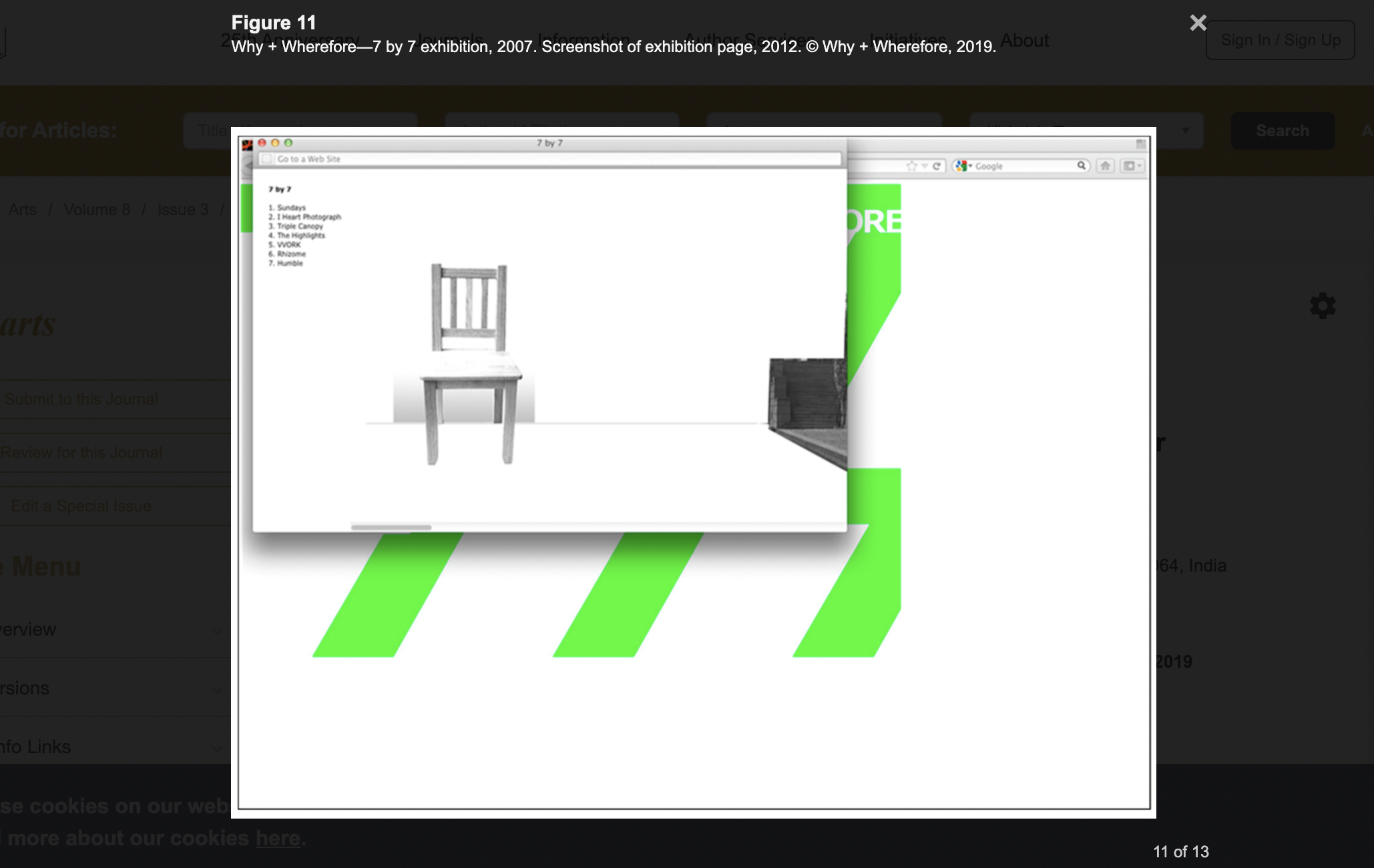 |
url |
| https://www.mdpi.com/2076-0752/8/3/78/htm |